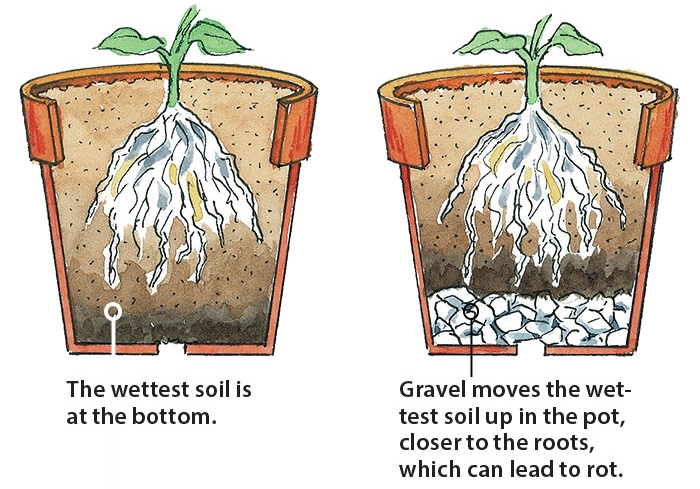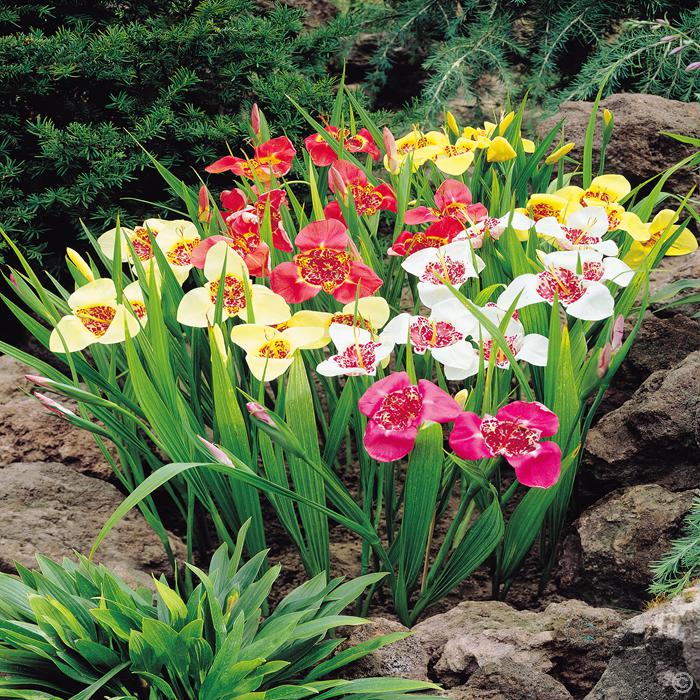10 Garden Myths Debunked
Many of the garden tips and tricks floating around out there have been passed down through generations, spread by word of mouth or found on the Internet. Many gardeners tend to rely on these methods and some of them are accurate and incredibly helpful, however there are a few, very common tricks that are actually big misconceptions. These misconceptions act as more of a hindrance than a helpful garden hack. Let’s expose these common garden myths and make your gardening experience a whole lot easier for next season.
Most people believe that adding a layer of gravel or stone at the bottom of a container will help improve drainage. I have actually heard this tip a number of times and I have tried it but with no avail. The gravel you place at the bottom of your planter will actually prevent free drainage and lead to moisture collecting around the roots. To avoid the inevitable root rot and disease, use a container with a drainage hole as well as a good potting mix. It has been said that planting “smelly” plants around the outside of your garden will keep deer and other pests away. I have been struggling with keeping deer out of my garden for some time now, and I can tell you first hand that smelly plants do not do the trick. The deer are smart and they quickly learn to simply walk around the smelly plants to get to feast on your garden. Click here for some alternative methods to keep the deer from invading your outdoor space.
There seems to be a lot of misconceptions regarding the fertilization of plants as well as lawns. Some people believe that since a little fertilizer is good for the plants, then adding more will work better. This is incredibly wrong. Adding too much fertilizer to your plants will fry the roots as well as stunt the plants natural growth habit. Most fertilizers have a high content of nitrogen; too much will result in a lot of thick foliage but no blossoms or fruit. The excess fertilizer can also wash into the ground water, which has been causing problems for local bodies of water throughout the state. Too much fertilizer on your lawn will result in burning; your green grass will look like straw.
Many gardeners want to have a drought-tolerant garden. This is mainly due to the misconception that these drought-tolerant plants require no water. Drought-tolerant does not mean: “no water required” it simply means that the plant requires less watering than others. No matter what, all plants need regular water until the plant is well established. Certain plants do become drought-tolerant after they are established, but they still require occasional watering. Especially in the heat of summer, make sure you are watering your drought-tolerant plants moderately. When it comes to watering lawns, there are many opinions on the best time to complete this task. Most people tend to believe that watering at night will help save water and keep the grass healthy. However, if you are watering your lawn at night, the water will sit on the lawn throughout the evening and thus inviting mildew and fungal diseases. In truth, it is best to water your lawn in the morning, giving it more than enough time to dry before nightfall.
Gardeners everywhere love using mulch in the garden, however most people believe that the mulch should be piled up against the shrubs to keep them healthy and protected from possible winter damage. This is also false, Mulch helps retain moisture and keeping the plant material constantly damp can lead to a number of diseases and fungus. When mulching in your garden, be sure to keep it a few inches from the trunk of your plant material. There is another misconception that sand will improve the quality of clay soil. Adding sand to clay soil will result in your soil having consistency comparable to mortar. The best way to improve clay soil is by introducing organic material, compost or finely chopped bark will do the trick. English ivy can be invasive but is not a parasitic plant, as some believe. It can grow up to 90 feet and kills other plants by blocking out the sunlight necessary for success.
Most people tend to believe that sterilizing their garden tools with a bleach and water mixture works the best. Bleach is actually corrosive and will gradually ruin the quality of your tools. Some alternatives are rubbing alcohol, Listerine, Lysol or WD40 – these products are relatively safe to use in small quantities. Always make sure that you sharpen and clean your garden tools regularly - this will help to avoid spreading any fungus or disease to your other plant materials. Another tip most gardeners tend to follow is that young newly planted trees should always be staked. The truth is allowing the young tree to move freely allows it to grow stronger and sturdier. If you are planting your new tree in a fairly windy spot or if the tree tends to be top-heavy, it can be loosely staked with a flexible and soft material. Make sure that the stake isn’t in place for longer than six months.
Use the tips we have listed in this article to help avoid these common garden myths. If you are unsure of a garden hack that a friend or relative mentioned to you, a little research won’t hurt. As landscape designers, we love our gardens as much as you do! We want to make sure that your gardening experience is as relaxing, enjoyable, successful and most importantly, SAFE. We all can’t wait for the next gardening season, but keep these tips in mind and if you have any proven garden hacks or other myths to be debunked, please post them in the comment section on our Facebook.




































